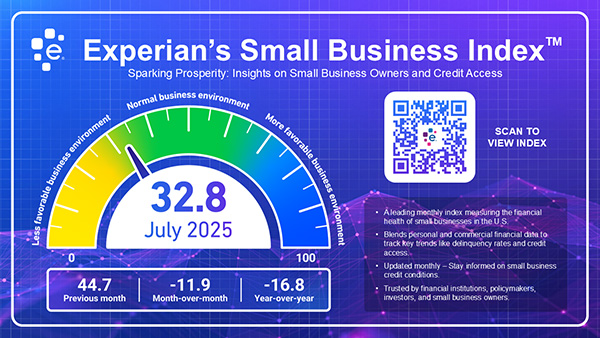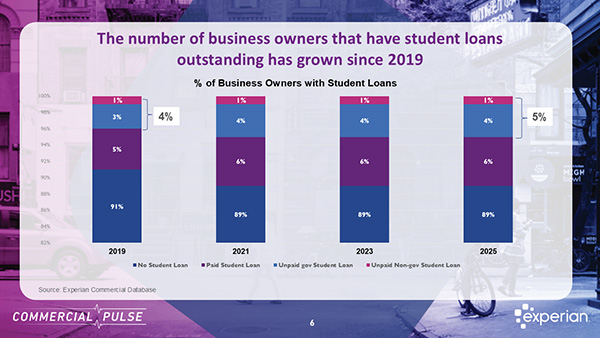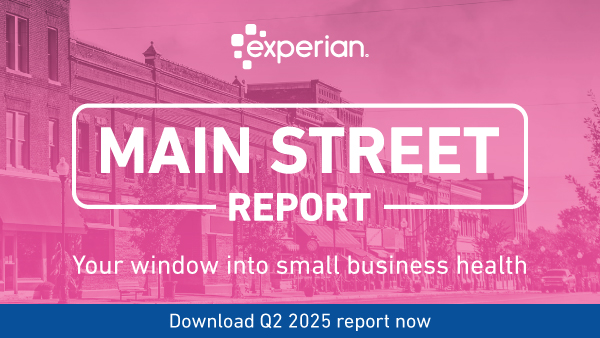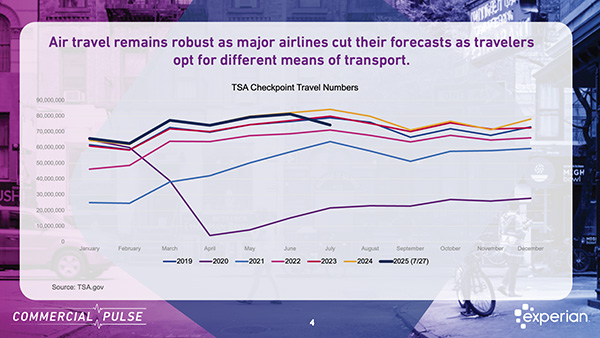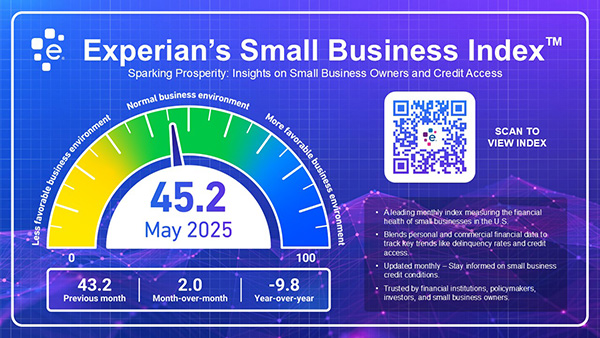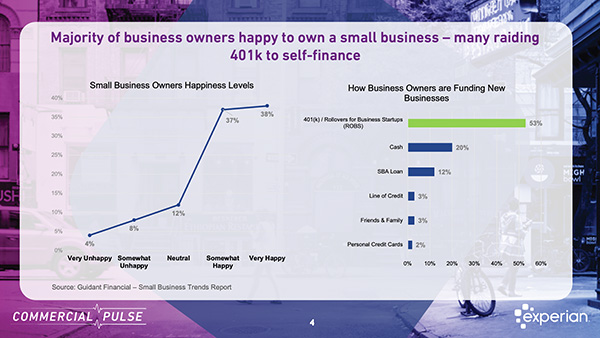In an era of economic change and rapid entrepreneurial growth, small business lenders are rethinking how they assess creditworthiness. Traditional business credit models, while useful, often fall short in evaluating the full financial picture of today’s small business owners, many of whom are new to the market, operate as sole proprietors, and blur the lines between personal and business finances. To address these gaps, financial institutions are increasingly turning to blended credit scores, which combine consumer and business credit attributes to create a more holistic risk profile.
Blended credit scoring is not a new concept, but its relevance has surged in recent years. As market conditions fluctuate and the composition of small business customers evolves, this approach offers a more accurate, inclusive, and strategic method for making credit decisions. It enables lenders to better serve emerging entrepreneurs, deliver personalized financial solutions, and retain customers in a competitive financial services landscape.
A changing landscape for small businesses and the rise of new data sources for assessing credit risk
One of the most compelling reasons to adopt blended credit scoring is the dramatic increase in new business formation. According to the U.S. Census Bureau, Americans have continued to launch new businesses at historically high rates. In April 2025 alone, over 450,000 new business applications were filed, maintaining a trend that began during the COVID-19 pandemic and has yet to slow down1.
This surge in entrepreneurship has fundamentally changed the profile of small business borrowers. Many of these new businesses are sole proprietorships or microenterprises with limited or no business credit history. Relying solely on business credit data in such cases can lead to incomplete or misleading assessments. Blended credit scores fill this gap by incorporating the personal credit behavior of business owners, offering a more comprehensive view of their financial reliability. For example, a first-time entrepreneur may have a strong personal credit history but no established business credit. A traditional model might flag this as high risk, while a blended model would recognize the individual’s responsible financial behavior and adjust the risk assessment accordingly. This not only improves access to capital for deserving borrowers but also helps lenders expand their portfolios with greater confidence.
Personalization at scale: delivering the right offer at the right time to small business clients
Another key advantage of blended credit scoring is its ability to support personalized financial offerings. In today’s digital-first economy, small business owners expect the same level of customization and responsiveness from their financial institutions as they do from consumer brands2. Meeting these expectations requires a deep understanding of each customer’s unique financial situation, something that blended scores are well-equipped to provide.
Research from industry leaders highlights the growing importance of personalization in financial services. Customers are more likely to engage with and remain loyal to institutions that offer relevant, timely, and tailored solutions2. Blended credit data enables this by revealing patterns and preferences that might otherwise go unnoticed. Consider a small business owner who uses personal credit cards to finance business expenses. A lender relying solely on business credit data might miss signs of financial strain or opportunity. With a blended score, however, the lender can detect shifts in spending behavior, anticipate credit needs, and proactively offer solutions—such as a business line of credit or working capital loan—before the customer even asks. This proactive approach not only enhances customer experience but also strengthens the lender’s position in the market. By delivering the right offer at the right time, financial institutions can build long-term relationships, increase wallet share, and reduce churn.
Protecting market share: managing the consumer-business credit overlap
Another reason why blended credit scores are gaining traction is the increasing overlap between consumer and business financial portfolios3. For many small business owners, especially sole proprietors and freelancers, the line between personal and business finances is often blurred. They may use the same bank accounts, credit cards, or even loans for both purposes. It’s typical for the first two years for a business principal to leverage their own personal cash to infuse the business with capital and may take several years to establish separate accounts or a business credit profile.
This convergence presents both a challenge and an opportunity for financial institutions. The scenario complicates risk assessment and product segmentation while presenting a need that gives lenders a chance to deepen customer relationships, preventing flight to a competitor—if managed correctly.
According to the Federal Reserve’s 2023 Small Business Credit Survey, nearly 70% of small employer firms used personal funds to support their businesses. This statistic underscores the importance of viewing customers through a dual lens. A lender that fails to recognize the interconnectedness of personal and business finances can misjudge creditworthiness or miss cross-sell opportunities.
Blended credit scores address this challenge by integrating data from both domains, allowing for more accurate underwriting and more strategic customer engagement. It also helps institutions identify at-risk customers who might be tempted to move their financial services elsewhere in search of better support. By offering integrated solutions that reflect the full scope of a customer’s financial life, lenders can increase loyalty and reduce the likelihood of default.
The benefits of blended credit scoring are not just theoretical—they are being realized in practice by forward-thinking financial institutions. Fintech companies have embraced this approach to serving underbanked and emerging business segments. By leveraging alternative data and machine learning, they can assess risk more dynamically and inclusively. Traditional banks are also beginning to adopt blended models, to enable the approval of more loans, reduce default rates, and improve customer satisfaction. In a competitive lending environment, these advantages can be a competitive differentiator.
Another major benefit for lenders is that blended scores support regulatory compliance and risk management initiatives. By providing a more complete picture of borrower behavior, they help institutions meet fair lending standards and avoid discriminatory practices. They also enhance portfolio monitoring, enabling early detection of potential issues and more effective intervention strategies.
Despite its advantages, blended credit scoring is not without challenges. Data integration, privacy concerns, and model transparency are all important considerations. Financial institutions must ensure that they have the infrastructure and governance in place to manage and protect sensitive data. While blended scores offer valuable insights, they should complement human judgment and relationship management. Lenders must strike a balance between data-driven decision-making and personalized service. For small businesses, education is a key factor in gaining access to capital early on. Many small business owners are unaware of how their personal credit affects their business prospects or how to establish a business credit profile. Financial institutions have an opportunity to educate customers, promote responsible credit behavior, and build trust through transparency.
As the small business landscape continues to evolve, so too must the tools used to support it. Blended consumer and business credit scores represent a smarter, more inclusive approach to credit decision-making. They reflect the realities of modern entrepreneurship, enable personalized engagement, and help financial institutions retain valuable customers in a competitive market. By embracing blended credit scoring, lenders can not only improve their bottom line but also contribute to a more equitable and dynamic small business ecosystem. In a time of uncertainty and opportunity, that’s a win for everyone.
Want to learn more about Experian’s blended credit solutions? Visit our website for more details.
Sources:
1 – US Census Bureau, Business Formation Statistics Monthly Data Release
2 – The Fintech Times, Personalization Takes Centre Stage in Financial Services for 2025, December 2024
3 – Federal Reserve and IRS Data, 2024, While specific government statistics on consumer-business credit overlap are limited, industry analysis and Federal Reserve research highlight the growing convergence of personal and business financial behaviors, especially among sole proprietors and small business owners.
Related Posts









